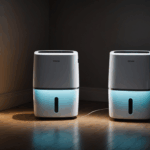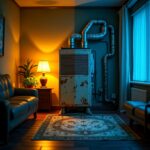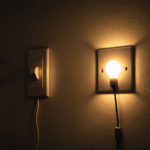As we approach 2025, groundbreaking energy-efficient technologies are revolutionizing how we think about home upgrades and sustainability. According to the U.S. Department of Energy, these innovations could reduce residential energy consumption by up to 30% compared to traditional systems. Advanced building materials and smart systems are at the forefront of this transformation, offering homeowners unprecedented control over their energy usage.
One of the most promising developments is the emergence of electrochromic windows, also known as smart glass. These windows automatically adjust their tint based on sunlight intensity and indoor temperature requirements, potentially reducing cooling costs by 20% according to studies by the Lawrence Berkeley National Laboratory. Major manufacturers are now offering these solutions at increasingly competitive prices, making them a viable option for energy-conscious homeowners.
Phase-change materials (PCMs) represent another leap forward in temperature regulation. These sophisticated materials, integrated into walls and ceilings, absorb and release heat at specific temperatures, helping maintain consistent indoor comfort while reducing HVAC energy consumption by up to 25%, as reported in the Journal of Building Engineering.
- Advanced heat pump systems with coefficient of performance (COP) ratings exceeding 4.0
- Next-generation LED lighting with enhanced efficiency and smart controls
- Innovative building envelope materials with self-healing properties
- Zero-energy water heating systems utilizing heat exchange technology
The latest advancement in HVAC technology comes in the form of magnetic refrigeration systems, which promise to reduce energy consumption by up to 30% compared to traditional vapor compression systems. These systems use environmentally friendly materials and require minimal maintenance, making them an ideal choice for sustainable home improvements.
Thin-film solar technology is also making significant strides, with new materials achieving conversion efficiencies above 23%, according to the National Renewable Energy Laboratory. These advanced solar solutions can be integrated directly into building materials, including roofing tiles and window films, providing energy savings while maintaining aesthetic appeal.
Building energy management systems (BEMS) have evolved to incorporate artificial intelligence and machine learning capabilities. These systems can now predict and optimize energy usage patterns, resulting in additional 15-20% reduction in energy consumption, as documented by the American Council for an Energy-Efficient Economy (ACEEE).
Sustainable insulation and weatherization solutions
Proper insulation and weatherization remain cornerstone strategies for achieving significant energy savings in residential buildings. Modern materials and techniques have evolved substantially, offering homeowners more effective and environmentally conscious options for maintaining comfortable indoor temperatures while reducing energy consumption. According to the Environmental Protection Agency, comprehensive weatherization can reduce energy bills by an average of 15-20% annually.
Advanced aerogel insulation, derived from recycled materials, provides superior thermal resistance while being up to 90% lighter than traditional options. These ultra-lightweight materials offer R-values up to three times higher than conventional insulation per inch of thickness, making them particularly valuable for space-constrained areas and home upgrades requiring minimal structural modifications.
Innovative bio-based insulation products, including those made from mushroom mycelium and recycled cotton fibers, are gaining popularity due to their excellent thermal properties and sustainability credentials. These materials not only provide effective insulation but also contribute to improved indoor air quality and reduced environmental impact throughout their lifecycle.
Air sealing technologies have also advanced significantly, with new expanding foam products that adapt to structural movement and maintain their integrity over time. These solutions, combined with smart vapor barriers featuring variable permeability, create a more effective building envelope that responds dynamically to changing environmental conditions.
- Advanced weather stripping systems can reduce air leakage by up to 30-40% compared to traditional options
- Multi-layer window films now offer four-season performance with heat retention in winter and reflection in summer
- Smart moisture management systems can detect and prevent condensation issues before they lead to structural damage
- New radiant barrier materials reflect up to 97% of radiant heat while allowing beneficial thermal mass effects
The integration of phase-change materials into insulation systems represents another breakthrough in thermal management. These materials can store and release heat energy at specific temperature thresholds, helping to maintain stable indoor temperatures while reducing the load on heating and cooling systems. Studies show that buildings equipped with PCM-enhanced insulation can achieve energy reductions of up to 25% in heating and cooling costs.
Professional energy audits utilizing advanced thermal imaging and blower door testing have become more sophisticated, allowing for precise identification of air leaks and insulation gaps. This data-driven approach enables homeowners to prioritize the most impactful weatherization improvements and track their effectiveness over time.
Smart home automation for energy savings
While smart home automation offers tremendous potential for energy savings, many homeowners make critical mistakes that can diminish its effectiveness. A common error is installing disconnected smart devices without creating an integrated system. For optimal performance, smart thermostats, lighting controls, and appliances should work together through a central hub, enabling coordinated responses to occupancy patterns and environmental conditions.
Many people overlook the importance of proper device placement. Smart sensors need strategic positioning to accurately detect occupancy and temperature variations. For instance, motion sensors shouldn’t be placed behind furniture or in dead zones, and smart thermostats should be installed away from direct sunlight or drafts to prevent false readings that could trigger unnecessary heating or cooling cycles.
Another frequent mistake is relying too heavily on automation without establishing appropriate schedules and zones. The most effective home automation systems require initial programming that reflects household routines and preferences. Users should create distinct schedules for weekdays and weekends, and set up different temperature zones for occupied and unoccupied areas.
Failing to regularly update firmware and software can leave systems vulnerable to security risks and prevent access to new energy-saving features. Smart device manufacturers frequently release updates that improve efficiency algorithms and add new functionality. Setting up automatic updates ensures continuous optimization of energy consumption.
Some homeowners invest in complex systems without properly training family members on their use. This often results in manual overrides that negate potential energy savings. Creating simple user guides and conducting family tutorials can ensure everyone understands how to effectively interact with the automation system.
Battery-operated smart devices present another challenge when batteries aren’t monitored and replaced promptly. Dead sensors can disrupt the entire system’s effectiveness. Using rechargeable batteries or hardwired options where possible can help maintain consistent performance and reduce maintenance requirements.
A crucial oversight is not utilizing data analytics features. Many smart home systems provide detailed energy consumption reports that can identify opportunities for additional savings. Regular review of these reports can help fine-tune automation settings and identify unusual patterns that might indicate equipment problems or inefficient usage habits.
Proper integration with utility company programs is often neglected. Many energy providers offer demand response programs and time-of-use rates that can be synchronized with smart home systems to maximize cost savings. Participating in these programs can significantly reduce energy bills while contributing to grid stability.
Renewable energy integration for homeowners
The integration of renewable energy systems into residential properties has become increasingly sophisticated and accessible. Modern solar panel systems now achieve efficiency ratings of up to 25%, while new micro-inverter technology ensures optimal performance even when some panels are partially shaded. These advances make solar installations a more viable option for homes with less-than-ideal roof orientations or partial obstruction from trees.
Battery storage technology has evolved significantly, with new lithium-iron-phosphate systems offering longer lifespans and improved safety profiles. These systems can now store enough energy to power an average home for 2-3 days, providing crucial backup during grid outages while enabling homeowners to maximize their energy savings by storing excess solar production for use during peak rate periods.
Wind energy has become more practical for residential applications through the development of vertical-axis turbines that operate efficiently in urban and suburban environments. These compact systems can generate up to 2,000 kWh annually in areas with average wind speeds of just 12 mph, while producing minimal noise and vibration.
Geothermal heat pump systems have been revolutionized by advanced drilling techniques and improved heat exchange technology. Modern systems achieve coefficients of performance exceeding 5.0, meaning they produce five units of heating or cooling energy for every unit of electricity consumed. Some key benefits include:
– Reduced installation costs through innovative boring methods
– Integration with smart home systems for optimal performance
– Hybrid systems that combine geothermal with air-source heat pumps
– Enhanced monitoring capabilities for system optimization
Micro-combined heat and power (micro-CHP) systems represent another breakthrough in home energy production. These units generate both electricity and heat from a single fuel source, achieving overall efficiencies of up to 90%. When powered by renewable natural gas or hydrogen, they offer a path to carbon-neutral operation.
The latest solar thermal systems incorporate vacuum tube collectors that maintain high efficiency even in cold climates. These systems can provide up to 70% of a household’s hot water needs and can be integrated with space heating systems for improved overall performance.
Grid integration has become more seamless with the adoption of smart inverters and energy management systems. These technologies enable homes to participate in grid services, earning additional income while contributing to overall grid stability. Some utilities now offer premium rates for solar exports during peak demand periods, maximizing the financial benefits of renewable installations.
By taking advantage of current federal tax credits, state incentives, and innovative financing options, homeowners can often recover their renewable energy investments within 5-7 years while increasing their property values by an average of 4.1%, according to recent real estate studies.
Remember, successful renewable energy integration requires careful planning and professional expertise to ensure systems are properly sized and optimized for your specific home and energy usage patterns. Working with certified installers and staying informed about emerging technologies will help maximize your return on investment while contributing to a more sustainable future.
Cost-effective efficiency upgrades and incentives
- What are the most budget-friendly home upgrades I can start with?
- LED lighting upgrades and smart thermostats offer the fastest return on investment, typically paying for themselves within 1-2 years. These simple improvements can reduce energy consumption by 10-15% with minimal upfront costs.
- Are there any government incentives available for energy-efficient home improvements?
- The federal government offers tax credits of up to 30% for qualifying energy-efficient improvements through 2032. Many states and utilities also provide additional rebates and incentives, which can significantly reduce the upfront costs of home upgrades.
- How can I find out which energy improvements will be most effective for my specific home?
- A professional energy audit is the best way to identify the most cost-effective improvements for your home. These assessments typically cost between $200-$600 but can identify energy savings opportunities that pay back many times the initial investment.
- What’s the typical payback period for major energy efficiency investments?
- Payback periods vary by improvement type, with insulation typically returning investment in 3-5 years and solar panels in 5-8 years. When combined with available incentives and rising energy costs, these periods can be significantly shorter.
- Can energy-efficient upgrades increase my home’s value?
- Energy-efficient improvements typically increase home value by 2-6%, according to the National Association of Realtors. Homes with documented energy savings and green certifications often sell faster and command premium prices in today’s market.











